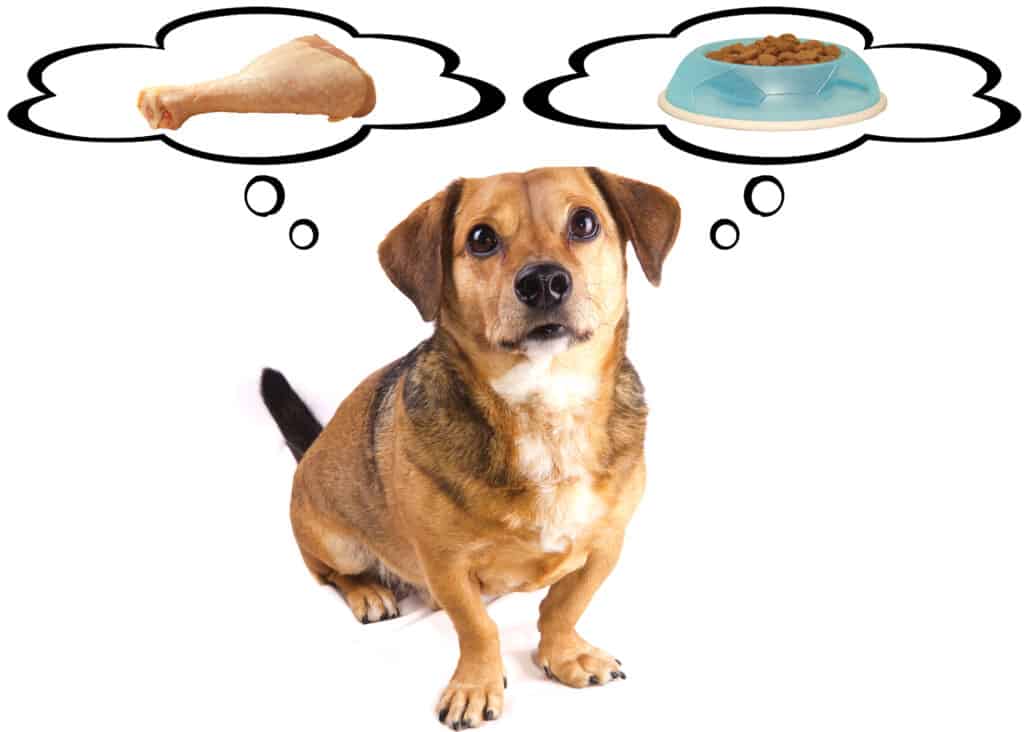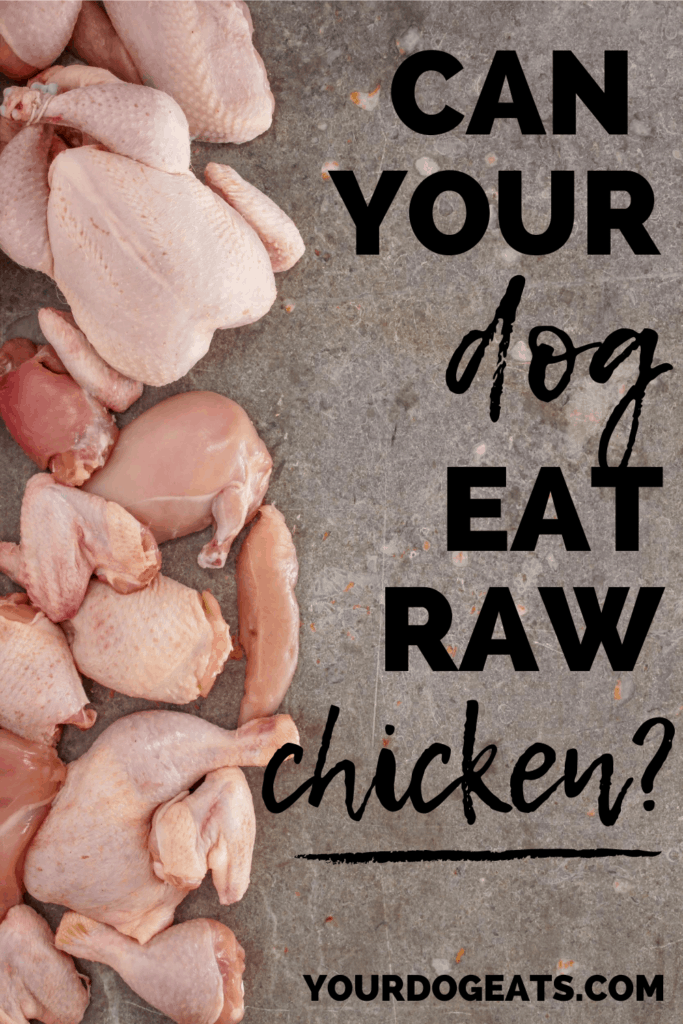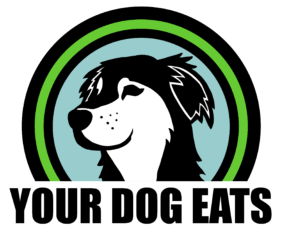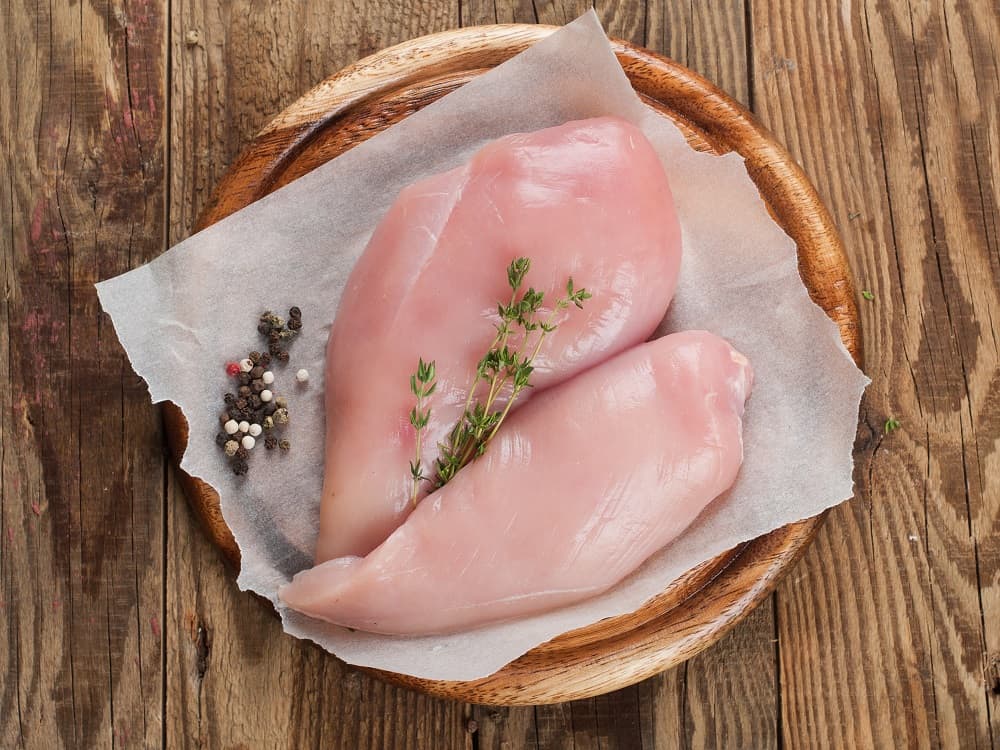If your pup just grabbed a piece of chicken off the counter before you had a chance to cook it, you might be wondering – can dogs eat raw chicken? Generally, it’s not a major concern if your furry friend had a few bites of raw chicken. For the most part, though, chicken should be served cooked. Here’s some more insight!
This post was reviewed for veterinary accuracy by Cara Wright, DVM. For more information about our review process and Cara, please visit the About Us page.
Should dogs eat raw chicken?
Opinions on this tend to be mixed in the pet owner world. While many raw food advocates exist, it’s important to know that both the CDC and the American Veterinary Medical Association (AVMA) discourage raw meat, including chicken, for pets.
Raw chicken is not broadly recommended for most dogs due to the risk of bacterial contamination. This includes the risk to the dog itself, but also the risk of spreading bacteria to other household members. However, if your dog occasionally sneaks a few bites of raw chicken, it’s probably not a major cause for concern.
As you probably know, raw chicken can contain bacteria like salmonella and other pathogens. But a dog’s digestive system is different than a human system. Dogs descended from wolves, known for eating raw meat, and their digestive systems have some characteristics that supported that.
For example, dogs have a more acidic stomach than humans, which can help to kill bacteria. Similarly, a dog’s digestive system is shorter, which means there’s less time for potentially harmful components to be “hanging around” in the intestinal tract. Some believe the different microbiome in the dog’s gut may also contribute to a reduced risk. As such, it’s less likely that those bacteria and toxins will hurt a dog compared to a human.
Even so, it’s still a risk to serve raw chicken to your dog. For example, one study in Gut Pathogens concluded that the potential risk of opportunistic infections from these bacteria in raw meat diets could be higher compared to commercial food. And another study in the Journal of veterinary internal medicine concluded that raw chicken consumption may increase the risk of Acute polyradiculoneuritis (APN), a nerve disorder in dogs. The relationship with raw chicken may be due to infection by a certain bacteria, Campylobacter spp., in the chicken.
The risk is greater if your dog is very young, old, or has a medical condition that compromises the immune system. Cooked chicken is much less risky and offers similar nutrients.
Should dogs eat cooked chicken?
Cooked chicken is definitely an acceptable treat, or can be part of a whole food diet for dogs. The chicken should be unseasoned (remember, ingredients like garlic and onions can be toxic for dogs). You can poach it, bake it, or toss it in your slow cooker. Chicken is high in protein and can be a great addition to your pup’s diet.
Don’t let your dog eat chicken bones
Keep in mind that you should serve chicken off the bone, whether raw or cooked. Chicken bones, especially when cooked, can splinter easily. This can increase the risk of choking in dogs. If swallowed, it could even cause an obstruction or internal bleeding.
If your dog happened to snag a piece of chicken with the bones, watch for signs of choking (like wheezing or difficulty breathing) or signs of an obstruction (like pain in the belly, problems pooping, rectal bleeding, vomiting, decreased appetite, diarrhea, or bloating). If you notice either, be sure to contact your veterinarian immediately.

Take precautions with raw meat
If you do decide to serve your dog raw meat despite the info above, take precautions to reduce the risk of bacterial contamination – not only for them, but for other household members.
First, ensure the chicken is as fresh as possible. We know that bacterial contamination can grow day by day, even in the refrigerator. Second, don’t leave raw chicken out for long periods of time and then serve it to your dog. The “temperature danger zone” lies between 40 and 140 degrees, which is the temperature where bacteria on food can quickly multiply.
Be cautious about cleaning up the areas where you handled the raw chicken, as well as where your dog ate it. A study in The Canadian veterinary journal found that 80% of raw chicken meals tested positive for salmonella, so areas like the food bowl, area around the bowl, and the dog himself can be spots of contamination.
For example, if your dog splashed raw chicken juice on the floor, this can be dangerous for young kids crawling around. Similarly, if they have raw chicken juices around their mouth and nose and then give your kiddo a big ‘ol lick on the face, that could be risky for foodborne illness for your child.
What about chicken allergies in dogs?
When it comes to the question “can dogs eat raw chicken”, remember to also consider possible allergies. Just like humans, dogs can occasionally have food allergies too. Allergies themselves are somewhat uncommon, though among dogs that do have allergies, chicken is one of the most common problem foods. If your dog has a chicken allergy, you’ll want to avoid serving any type of chicken – raw or cooked.
With food allergies, the dog’s body perceives the food protein to be a foreign invader, and the immune system is put into action. Symptoms of a chicken allergy in a dog can include itchy skin (especially common on the ears, paws, and stomach), hives, and gastrointestinal upset. It’s important to note that in some dogs, allergies can progress to severe anaphylactic reactions, which is a medical emergency.
However, if you notice your dog just has some mild skin irritation, don’t panic. Skin problems in dogs are more likely to be caused by environmental allergens, contact dermatitis, or fleas. Their skin can react to components in the environment, like pollen or grasses, or something else they may have rubbed against outside.
Whenever you’re worried about your dog’s symptoms though, it’s wise to take them to the veterinarian. They can help determine the root cause.
If a chicken food allergy is suspected, your veterinarian might put your dog on an elimination diet. In this case, you’ll feed the dog a strict diet of limited ingredients, generally made up of one protein and one grain. After about 2 months, you’ll be able to add foods back in one by one. If your dog starts reacting again, you’ll clearly identify the problem food(s). Note that an elimination diet is important to do under professional supervision to ensure your dog is getting all the key nutrients he needs.
A Final Word from Your Dog Eats
Don’t panic if your dog ate raw chicken. Especially if it was without bones, they’re likely to be just fine. However, if there were bones in the chicken, if you’re concerned about some symptoms in your dog (whether food poising symptoms or allergy symptoms), it’s always best to get the opinion of your veterinarian.
And if you’ve just started thinking about serving your dog a raw food diet, remember it does carry some risk. Be sure to talk to your vet about your plan. Depending on the dog breed, age, and medical history, your vet may advise against this. If they give you the green light, you should talk to them to find out how to structure the diet to support growth, development, and overall health.


